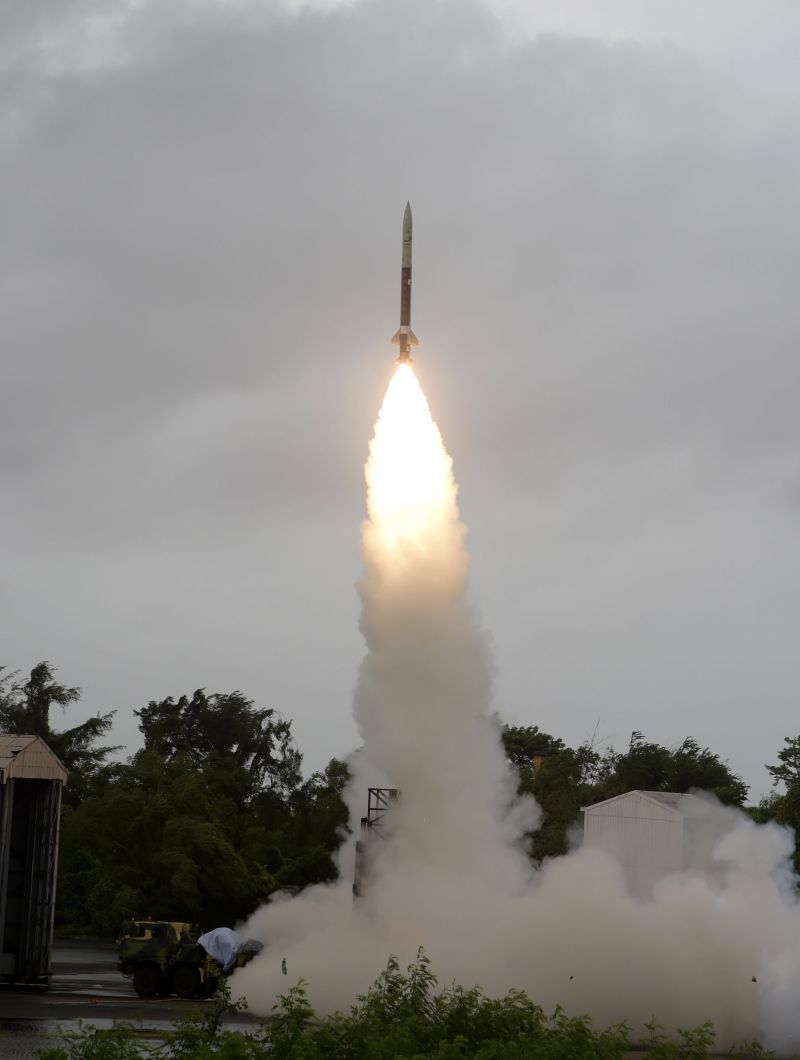Prahar: Yet Another Assertion of Total Self-reliance in Missiles
By Ravi Kumar Gupta

Prahar, a novel, highly manoeuvrable precision strike, Surface-to-Surface tactical missile capable of being fired in salvo mode is all set to extend the reach of our artillery fire to over 150 Km. The totally indigenous state of the art weapon system will enhance the potential of our artillery punch by supplementing the gun systems like Dhanush, K9, ultralight howitzers, the indigenous ATAGS and the indigenous PINAKA rocket systems (MkI and MkII) and replacing Prithvi-I, the very first indigenous 150 km range tactical ballistic missile.
Artillery strength of an Army has been a deciding factor in the majority of wars during the past few centuries. Strength in terms of a number of guns, in terms of quality and capabilities of the guns, in terms of expertise of the man behind the guns, in brief, every factor that directly or indirectly influences the effectiveness of the devastating potential of Artillery has been important. Many among such wars became instrumental in altering the course of the history of nations including our own Bharat.
Artillery had been playing a decisive role in battles until the emergence of aircraft and armoured vehicles. Nevertheless, Artillery has continued to play a pivotal role in the outcome of battles and has been an independent but integral and essential part of the military due to its Immense capacity to cause unbearable damage to not just enemy combat units, but also to its combat support systems and combat service support assets.
Technologies emerging in the past couple of decades have been transforming every aspect of warfare and Artillery is no exception. Rockets and short range surface to surface missiles are now part of Artillery regiments, so are the tracking and weapon locating radars and drones for damage assessment and fire correction. Precision-guided smart munitions, rockets and missiles are adding unprecedented capabilities to the devastating potential of artillery.
Even as Prithvi-I itself was a precision-guided tactical missile developed by the DRDO under its ‘Integrated Guided Missiles Development Program - IGMDP’ for the Indian Artillery forces during the 1980s, Prahar is yet another indigenously developed but far more compact and advanced precision-guided surface to surface missile with a similar range but with much-improved characteristics.
‘Prahar’ fills the vital gap between Multi Barrel Rockets and Medium-range Ballistic Missiles. It can deliver a variety of warheads and is particularly suitable for Mountain Warfare though it is an asset in a battle zone on any kind of terrain. The Missile is launched from a Road Mobile System, which can carry six missiles at a time that can be fired in salvo mode in all directions covering the entire azimuth plane.
The 7.3 meters long, 0.4 metres diameter ‘Prahar’ surface to surface missile weighing about 1.2 tons and powered by a single stage solid propulsion system follows typical ballistic trajectory reaching heights of around 35 km, before heading towards the targets located up to distances in excess of 150 km. Equipped with a state-of-the-art high accuracy navigation and guidance system, electro-mechanical actuation systems and the latest onboard computer, 'Prahar’ is capable of annihilating targets within about 250 seconds of its launch and with a terminal accuracy of better than 10 meters.
Developed in a short span of fewer than two years by the DRDO, ‘Prahar’, a precision-guided weapon with a payload capacity of about 200 kg and a fast reaction time, so much essential for a battlefield tactical missile, is comparable to ATACMS Missile of United States of America. Once inducted, 'Prahar’ will provide the Indian Army with a cost-effective, quick reaction, all weather, all terrain, highly accurate battlefield support tactical weapon system.
Meanwhile, an export version of this missile system has also been developed and is named as 'Pragati’.
The maiden fight test of the missile was held on 21st July 2011. The most recent one held on 20th September 2018 was witnessed by the Chief of the Army Staff General Bipin Rawat.
Even as our own ‘Prahar’ indigenously designed and developed by the DRDO with active and enthusiastic support from our own private and public sector industries including MSMEs inches towards induction, it needs to be re-emphasized that Bharat has already achieved total self-reliance in the field of tactical missiles as well. Self-reliance in the area of indigenous design, development and production of ‘Strategic Missiles’, equipping the nation with a much-needed strength of deterrence against a threat/blackmail of nuclear attack had been achieved long ago and stands well demonstrated with series of such missiles as Agni5, Bo5 and K4.
*Former Scientist G and Director - Public Interface, DRDO Hqrs
Pic-PIB




